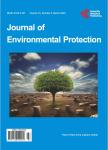Effects of Household Storage and Plumbing Systems on the Levels of Trace Elements in Desalinated Drinking Water in Kuwait
Effects of Household Storage and Plumbing Systems on the Levels of Trace Elements in Desalinated Drinking Water in Kuwait作者机构:Chemical Engineering Technology Department College of Technological Studies Public Authority for Applied Education and Training Adailiyah Kuwait Environmental Health Department College of Health Sciences Public Authority for Applied Education and Training Adailiyah Kuwait
出 版 物:《Journal of Environmental Protection》 (环境保护(英文))
年 卷 期:2012年第3卷第11期
页 面:1470-1484页
学科分类:1002[医学-临床医学] 100214[医学-肿瘤学] 10[医学]
主 题:Desalinated Water Kuwait Corrosion Leaching Trace Elements
摘 要:Household desalinated drinking water samples collected from outdoor points and from indoor consumption points at 99 locations representing more than 95% of the residential areas in Kuwait were analyzed for 25 trace elements and water quality parameters. Only Al, Cr, Co, Cu, Fe, Pb, Ni, and Zn were found to be over-represented at the consumption point compared with the outdoor point, with wide variations among the sampling locations and elements. The highest increases were observed for Fe (135%) and Zn (123%), followed by Pb (69%), Co (58%), Cu (42%), Cr (31%), and Al (30%), and the lowest increase was observed for Ni (19%). In most cases, the increases in Cu, Fe, and Zn were inversely proportional to the conductivity and directly proportional to the Cl– concentration. In the outdoor samples, only Fe exceeded the US-EPA guideline (in 3% of the outdoor samples taken), whereas Fe, Pb, and Ni exceeded the US-EPA and WHO guidelines in 8.5%, 0.3%, and 1% of the indoor consumption point samples, respectively. Thus, leaching from household utilities may cause health concerns for consumers of drinking water in Kuwait. The increases in Fe were the highest in the summer (240%), and in this regard, Fe exhibited the greatest difference between summer and winter (the increase was 139% higher in the summer). The results of the present study may be useful for water production authorities and consumers in Kuwait and suggest the use of alternative new pipes with more resistant internal coatings and connecting techniques.



